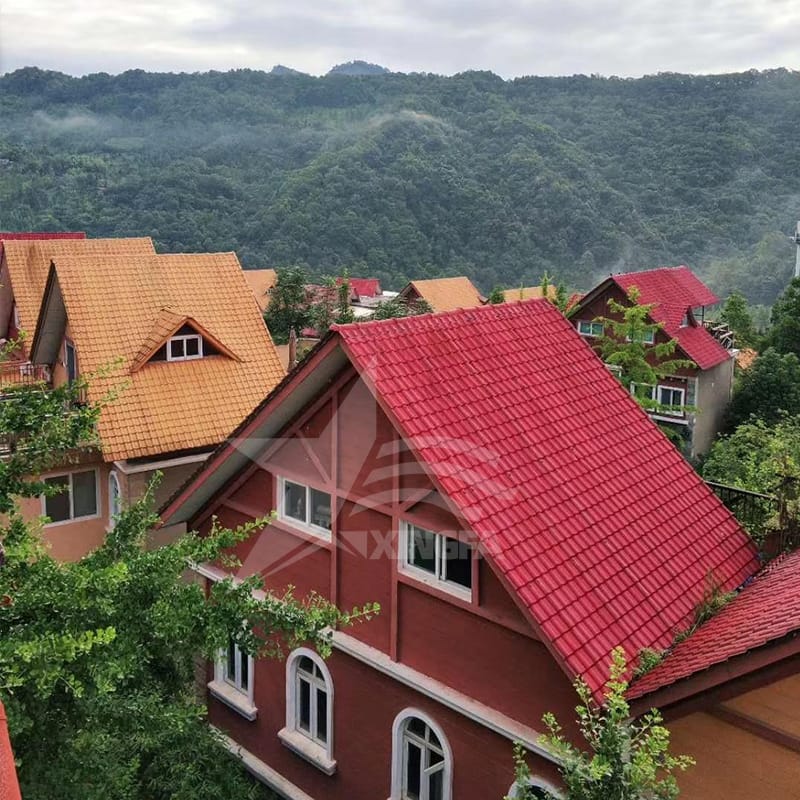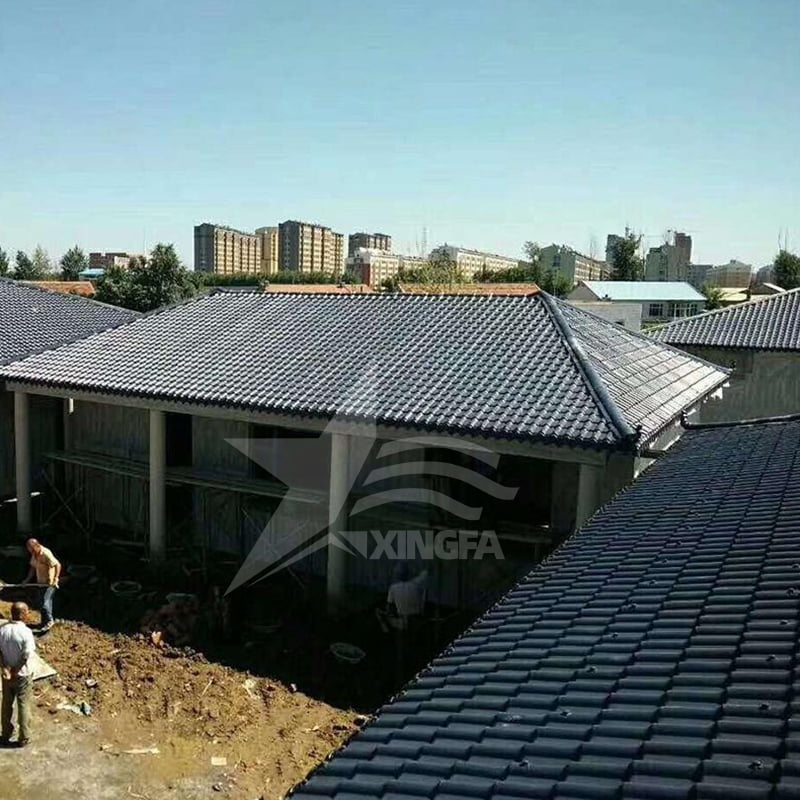Synthetic resin tiles, often referred to as ASA synthetic resin tiles, are composed of several raw materials that give them their distinctive properties. Here’s an analysis of their raw materials and composition:

Raw Materials and Composition
- ASA Resin
– Acrylonitrile: This component provides chemical resistance and thermal stability. Acrylonitrile contributes to the overall durability and longevity of the synthetic resin tiles.
– Styrene: Styrene offers rigidity and impact resistance. It is responsible for the tile’s structural integrity and ability to withstand physical stress.
– Acrylic: Acrylic enhances weather resistance, UV stability, and color retention. It ensures that the tiles maintain their aesthetic appeal over time without fading or becoming brittle.

- PVC (Polyvinyl Chloride)
– PVC is a major component that provides the base structure for the tiles. It is known for its durability, resistance to weathering, and fire retardant properties. PVC in synthetic resin tiles ensures robustness and longevity.
- Other Additives
– Stabilizers: Used to enhance heat and light stability, ensuring that the tiles do not degrade under prolonged exposure to sunlight and heat.
– Plasticizers: These improve flexibility and make the tiles less prone to cracking under stress or temperature variations.
– Fillers: Typically, calcium carbonate is used to improve the mechanical properties and reduce costs without compromising on quality.
– Color Pigments: High-quality pigments are used to provide a variety of color options while ensuring resistance to fading and discoloration.
Performance Attributes
– Durability: The combination of ASA resin and PVC gives synthetic resin tiles excellent durability, making them resistant to cracking, warping, and other forms of degradation.
– Weather Resistance: The acrylic component, along with stabilizers, ensures that the tiles can withstand harsh weather conditions, including intense sunlight, heavy rainfall, and extreme temperatures.
– Aesthetic Appeal: The use of high-quality color pigments and the inherent properties of ASA resin ensure that the tiles retain their color and finish for many years.
– Low Maintenance: Synthetic resin tiles require minimal maintenance due to their resistance to dirt accumulation, mold, and mildew.
– Environmental Impact: Synthetic resin tiles can be manufactured with a lower environmental footprint compared to traditional roofing materials. Additionally, they are recyclable, contributing to sustainability efforts.
Manufacturing Process
- Blending: The raw materials, including ASA resin, PVC, and various additives, are thoroughly blended to form a homogeneous mixture.
- Extrusion: The blended mixture is extruded through a mold to form the tile shape. Extrusion ensures uniform thickness and consistency in the tile’s structure.
- Cooling and Cutting: The extruded tiles are cooled and cut into desired sizes. Precise cutting ensures that each tile fits perfectly when installed.
- Surface Coating: A protective coating is often applied to enhance UV resistance and provide additional protection against environmental factors.
Applications
Synthetic resin tiles are widely used in residential, commercial, and industrial roofing applications due to their versatility, ease of installation, and long-lasting performance. They are particularly popular in areas with extreme weather conditions and for projects requiring aesthetically pleasing yet durable roofing solutions.

In summary, synthetic resin tiles are a composite material combining ASA resin and PVC with various additives to provide a durable, weather-resistant, and aesthetically appealing roofing solution. Their composition and manufacturing process ensure they meet the demands of modern roofing applications while offering environmental benefits through recyclability.










